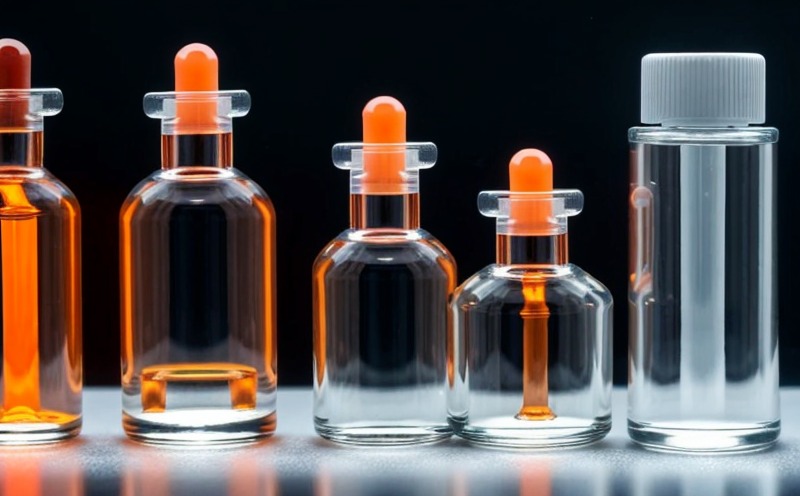ISO 10808 Acute Inhalation Toxicity Testing of Nanomaterials in Rodents
The ISO 10808 standard specifically addresses the acute inhalation toxicity testing of nanomaterials using rodents, which is critical for assessing potential health risks associated with exposure to these materials. This test is pivotal as it helps regulatory bodies and R&D teams understand the safety profile of nanomaterials before they are introduced into the market or used in various applications.
The standard is designed to ensure that tests conducted under this protocol produce reliable, reproducible results. It defines a standardized approach for testing, which includes specific parameters such as test animal species (typically rats and mice), exposure conditions, and endpoints for assessing toxicity. This ensures consistency across different studies and laboratories, thereby enhancing the validity of the data.
The testing procedure involves exposing rodents to nanomaterials under controlled conditions via inhalation. The animals are closely monitored for signs of toxicity over a specified period, which allows researchers to assess the acute effects that can occur within hours or days of exposure. This method is particularly important because it mimics real-world scenarios where humans might be exposed through air intake.
The ISO 10808 standard also specifies the criteria for selecting appropriate nanomaterials and the methodology for preparing samples. It emphasizes the importance of accurately characterizing the nanomaterials before testing to ensure that the results reflect their true properties. This includes detailed analysis using techniques like transmission electron microscopy (TEM) and dynamic light scattering (DLS).
The test protocol is stringent, requiring rigorous quality assurance measures at every stage from sample preparation to data interpretation. Compliance with ISO 10808 ensures that the testing process adheres to international standards, enhancing credibility and trust in the results.
Understanding the acute inhalation toxicity of nanomaterials through this standardized test is essential for several sectors including pharmaceuticals, cosmetics, electronics, and environmental engineering. It helps in identifying potential hazards early on in product development or before commercialization, allowing for necessary modifications to ensure safety.
The results from ISO 10808 tests are crucial not only for regulatory compliance but also for internal decision-making processes within organizations working with nanomaterials. By providing detailed insights into the toxicity levels and potential health impacts, it supports informed choices about the use of these materials in various applications.
Industry Applications
| Industry Sector | Application |
|---|---|
| Pharmaceuticals | Evaluation of drug delivery systems and nanoformulations. |
| Cosmetics | Assessment of nanoparticle-based skin care products. |
| Electronics | Testing for safety in semiconductor manufacturing processes. |
| Environmental Engineering | Evaluation of nanoparticulate pollutants and their impact on ecosystems. |
The ISO 10808 testing protocol is widely used across various industries where nanomaterials play a significant role. For instance, in the pharmaceutical sector, it helps evaluate the safety of new drug delivery systems that utilize nanoparticles to enhance efficacy or target specific areas within the body.
In cosmetics, this test ensures that products containing nanoparticles do not pose undue risks when applied topically. Similarly, in electronics manufacturing, it assesses the safety of nanomaterials used during production processes, ensuring they meet stringent quality standards.
For environmental engineers, understanding the toxicity levels of nanoparticles is crucial for managing and mitigating pollution issues effectively. By identifying harmful effects early on, these professionals can take proactive measures to protect both human health and natural environments from potential risks associated with nanomaterials.
Quality and Reliability Assurance
The ISO 10808 standard places a strong emphasis on ensuring high levels of quality and reliability in acute inhalation toxicity testing of nanomaterials. To achieve this, several key measures are implemented throughout the testing process.
Firstly, precise sample preparation is critical. This involves thoroughly characterizing the nanomaterials using advanced analytical techniques before exposure to rodents. Such characterization ensures that only representative samples are used in the tests, reducing variability and enhancing accuracy.
The test environment must be strictly controlled to maintain consistent conditions for all exposures. Temperature, humidity, airflow rates, and other parameters are carefully monitored and adjusted as needed. This helps ensure that any observed effects can be attributed directly to the nanomaterials under study rather than environmental factors.
Regular calibration of equipment used during testing is another crucial aspect. Instruments like dosimeters, flow meters, and particle counters must be calibrated frequently to guarantee accurate measurements. This not only improves data quality but also maintains compliance with international standards like ISO 10808.
Data analysis plays a pivotal role in ensuring reliable outcomes from these tests. Statistical methods are employed to interpret the collected data accurately. Methods such as dose-response curves and survival analysis provide valuable insights into the toxicity profiles of different nanomaterials.
Finally, quality assurance audits are conducted periodically to verify adherence to protocol requirements. These audits involve checking documentation, reviewing experimental setups, and validating results against expected outcomes. They help identify potential issues early on and ensure continuous improvement in testing practices.
Environmental and Sustainability Contributions
The ISO 10808 standard for acute inhalation toxicity testing of nanomaterials contributes significantly to environmental sustainability by promoting responsible use and management of these materials. By identifying potential health risks early on, it enables industries to make informed decisions about product development and manufacturing processes.
This proactive approach helps minimize the ecological footprint associated with nanotechnology applications. For example, in pharmaceutical research, understanding toxicological profiles allows for the design of more targeted therapies that reduce unnecessary exposure to non-target tissues or organs.
In cosmetics, it encourages the formulation of safer products without compromising efficacy. This is achieved by selecting appropriate nanoparticles that deliver active ingredients effectively while minimizing adverse effects on consumers' health and wellbeing.
For electronics manufacturers, this standard ensures that nanomaterials are used responsibly during production processes. It promotes the development of greener technologies by encouraging the exploration of alternatives with lower environmental impacts when possible.
The ISO 10808 testing protocol also fosters transparency in communication between stakeholders involved in nanotechnology research and development. By adhering to internationally recognized standards, companies demonstrate their commitment to ethical practices that promote public trust and confidence in their products.





